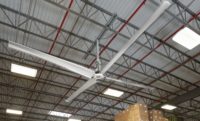Last year was the hottest year on record, according to the National Oceanic and Atmospheric Administration (NOAA) That didn't surprise the experts; nine of the ten hottest years have happened since 2000.
The health-related consequences of extreme heat are evident in a statistic from OSHA: 30 workers die from heat stroke in an average year -- and not just in the sunbelt.
"That means danger for the workers raking asphalt, sweating pipe and performing hundreds of other construction tasks in the heat and humidity," said Pete Stafford, Executive Director of the Center for Construction Research and Training.
The CPWR offers the following tips for protecting workers from heat-related illness:
- Wear light clothing, and include a shirt that serves as a shield from the sun's rays.
- Drink water every 15 minutes. Don't wait until you feel thirsty.
- Plan the day to tackle tougher jobs during the cooler morning hours.
- Rest in shaded areas or air conditioning, if possible.
- Watch your colleagues for signs of heat illness -- especially heat stroke!
The CPWR has a Construction Solutions database that helps safety professionals find commercially available solutions to common construction hazards - including heat stress. A webinar on July 22 will demonstrate how to use the database to find information on "Cooling Clothing and PPE."
CPWR WEBINAR
Cooling Clothing & PPE to prevent heat-related injuries
Date: Wednesday, July 22nd
Time: 2:00 p.m. EST
Length: 20 minutes
Presenters Babak Memarian and Chris Le will give a brief tour of Construction Solutions, the CPWR OSH database designed with contractors in mind, highlighting "Cooling Clothing & PPE" options.


